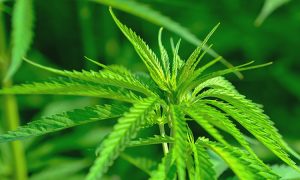 CBD with legally permitted levels of psychotropic elements can be derived from varieties containing higher levels of THC using better extraction techniques, according to an industry expert, potentially opening up new countries and markets.
CBD with legally permitted levels of psychotropic elements can be derived from varieties containing higher levels of THC using better extraction techniques, according to an industry expert, potentially opening up new countries and markets.
Tobias Postma, founder and CEO of Dutch company Topo Consulting, told CBD-Intel the process of chromatography could become a key form of extraction in the near future, opening up new markets for CBD production as well as helping with the production of full spectrum extracts that meet legal requirements for maximum THC levels.
“I’ve been in Colombia for the last year and a half,” he said. “Colombia is pretty much the perfect place to grow hemp – you have a 12-hour light cycle, which is ideal, and the government has been very supportive.
“The licence issued for non-psychoactive cannabis specifies a THC limit of 1% or less. Now, this is no good if you are in a country where the maximum THC allowed in CBD is 0.2% or lower. You can’t dilute it. So, if there is a growth in companies using chromatography – and I believe there will be – we could see a lot of Colombian CBD coming onto the market.”
Chromatography is an analytical technique more commonly used for separating a mixture of chemical substances into its individual components, so the individual components can be thoroughly analysed.
‘Technology is changing’
Postma believes CBD made with chromatography could be more efficient and thus more cost-effective. Currently, however, it is expensive.
“Even if you had a medium sized operation, one which would just process four or five kilos, then that would cost hundreds of thousands of dollars, so that means if you wanted anything of a decent size, you’d be looking at millions of dollars,” he said.
But he believes that as more companies start to use the process, efficiencies could be found which could lead to it becoming a common process as soon as some time next year.
Postma will be attending next month’s Cannabis Business Iberia conference in Spain, where he will speak about how companies can use other methods of extraction with CBD. He said: “I don’t want to give away too much now, but we are in quite an interesting phase, and the technology is changing.”
What This Means: Other methods exist for separating THC content during extraction, but chromatography appears to offer potential new benefits, meaning new markets could be explored more easily. While costs appear to be prohibitive in the short term, the technology is changing, so the future could be here quite soon.
– Peter Henn CBD-Intel contributing writer
Photo: Nicky







